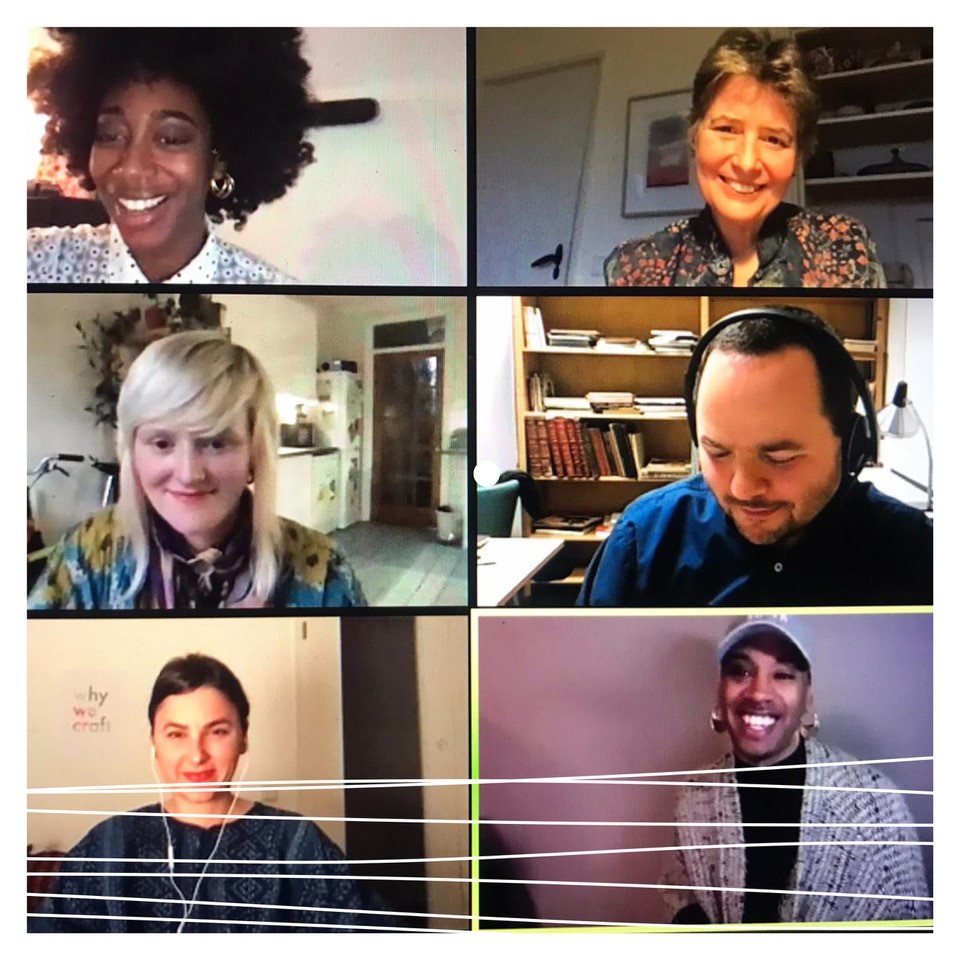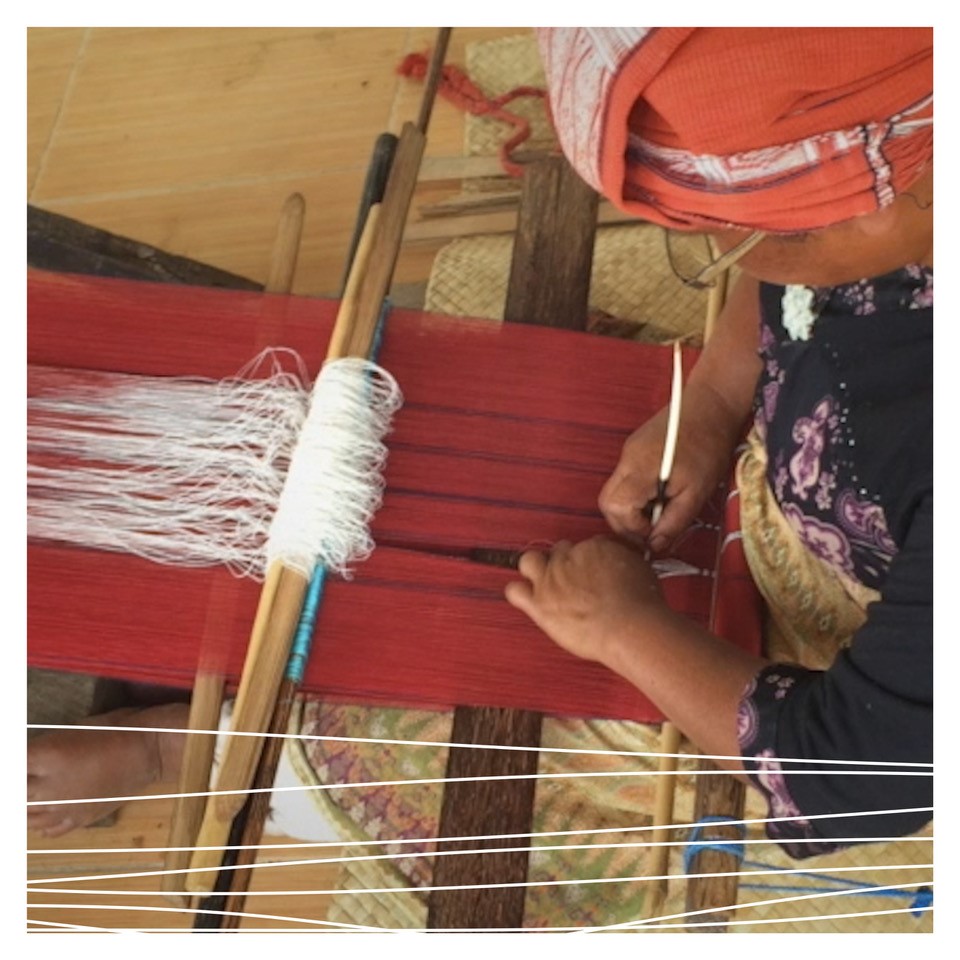Whataboutery #1: There can be no Other
For this very first online edition of its Whataboutery, State of Fashion, a platform originated to re-think the fashion system, joined forces with FASHIONCLASH, OSCAM and M-ODE. Within the framework of Culture.Fashion – a value driven network where connections are made between different Dutch fashion organisations – they invited three Dutch creatives (Giorgio Toppin, Amber Jae Slooten and Princess Isatu Hassan Bangura) to take a seat at the digital front row for a conversation on the latest work of anthropologist Sandra Niessen: ‘Regenerative Fashion: There can be no Other’. In this text, she explores what is needed for fashion to become truly sustainable. In the digital meet up Sandra shared her research findings and opened the floor for others to join the discussion.

An imported Dashiki in Ghana
Hearing Sandra Niessen speak about her research on weavers and the disappearing crafts in Indonesia made me recall a situation in Ghana. A few years ago, a friend came with me to its capital Accra. We were sitting in a taxi together when she saw a nice Dashiki (shirt) displayed on a dressing doll at a road shop. We stopped because she wanted to try on the shirt. To her, the shirt was a visual marker of her Ghanaian roots - it’s worn a lot by Ghanaians and often these shirts are made by local tailors. The shop owner gave her a tight and shiny package with the Dashiki in it. I had never seen this packaging before, so I asked the shop owner where the shirt was made. She said they imported it from Asia – hence the packaging. I was in shock! The Dashiki shirt is a classic in Ghanaian culture, one that many tailors in Ghana have been making for years and years. It’s so common that any ordinary tailor can probably sew one with eyes closed. What does this mean? Why did the shop owner import the shirt? Why are people in Asia making Ghanaian Dashiki’s? Are cultural practices like tailoring vanishing from Ghana?
The West versus the Rest
Sandra Niessen shared situations she came across in her research in Indonesia – a country where a lot of Western fashion is being produced. Young girls leave villages to work in factories because they have to support their family financially. In public debates we often say “Well, at least the young girls have a job and make money. But what are the impacts of their work to their community and culture? Why do they have to leave the village to make money? Can’t they make money with the local weaving practices (anymore)? Poverty destroys culture, Sandra argues. In debates on sustainability in fashion we often leave out the impact fashion has on culture whilst the industrial fashion system is destroying cultural diversity. Because who is still around to take on cultural practices from older women in the villages if young girls have left to work in factories? I wonder what will happen to the tailors if more shops will start importing their Dashiki’s. What will the cultural meaning and value of a Dashiki be if they are being mass produced and imported? Would my friend still wear it as a cultural identifier?
Decolonize fashion
Our fashion system shows us how much the colonial wound is still alive, Rolando Vázquez says. Sandra’s research also demonstrates this. Colonization is the policy or practice of acquiring full or partial political control over another country, occupying it with settlers and exploiting it economically. Though Europe doesn’t practically have control anymore over countries, Eurocentric fashion systems do. Because how is the young girl in the village going to survive if the only place where money can be made is the fashion factory in the city or in a neighbouring country? To decolonize fashion, we have to take the economic aspect away from being at the centre of the industry and focus on other aspects like race and gender, Rolando argues. We have to step away from the Eurocentric canon. Our fashion system has to be plural instead - with plural realities Clare Farrell adds.
Your culture is not my commodity
Clare argues that we see culture as a commodity, something we can buy and own. I have to agree; cultural appropriation is integrated in many Western cultures and fashion systems. Think of the runway show of Victoria Secret where Native American dress was worn by women in underwear - to sell underwear. Completely taken out of context, worn as costume with loss of meaning by models that look like me – everything but Native American. Or think of the collection of high-priced Stella McCartney dresses with so-called ‘African print’ that looked a lot like dresses West African women wear indoors, made by tailors. Young factory workers are putting their cultural embellishment on materials for Western fashion brands that will sell them outside their cultural context, without cultural meaning, for commercial purposes. Our Eurocentric fashion system turns cultural artifacts or practices into items that fit in our fast-paced fashion system that is driven by consumption and renewal. Monica Boța Moisin therefore claims that ownership of knowledge and techniques is needed within cultures. She came up with the 3C rule: consent, credit and compensation. To make sure we don’t take other people’s culture and make it our commodity, we have to ask permission and engage the people whose cultures we’re inspired by in the conversation. Culture needs cultural intellectual property.
The future is now
We have a long way to go, but hope is already here in the form of the new fashion designers and creators with diverse values, ideals and cultural backgrounds. The Dutch fashion industry is blessed with designers like Giorgio Toppin of XHOSA, who is diving into his own Surinamese culture to design modern menswear from local Surinamese fabrics, Amber Jae Slooten, co-founder of the first digital fashion house The Fabricant and Princess Isatu Hassan Bangura a graduate at Theatre Academy Maastricht who is creating performances that represent people that look like her - something she has been missing growing up in the Netherlands. There is also hope in Lagos and Accra, where I do research. Brands like IAMISIGO or Maxivive produce and design in Nigeria, even with the challenging power cuts and massive traffic jams that make it hard to meet deadlines. Or Accra-based collectives such as Free The Youth that is making streetwear items with local interpretations. Or designer Larry Jay who is using cultural weaving techniques for his materials. If you find culture important and if you like to support designers that are culture-driven; these are the brands you can spend your money on.

About Carmen Hogg
Carmen Hogg is a style anthropologist, creative producer and writer. She researches style in relation to identity and (sub) culture and publishes (ongoing) research into short reads, photo series, video’s and write ups of interviews. She’s specialized in contemporary fashion in Lagos (Nigeria) and Accra (Ghana) and Afrobeats. To her, your style is the visual expression of your identity and a way to tell stories.